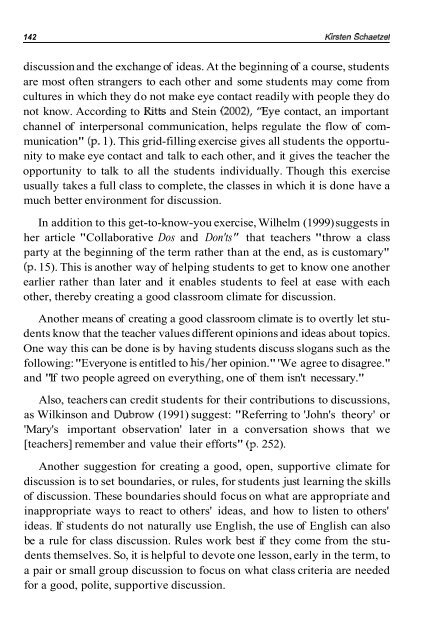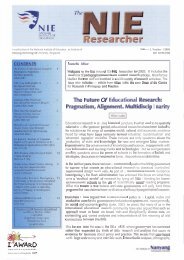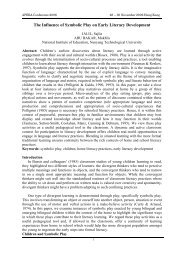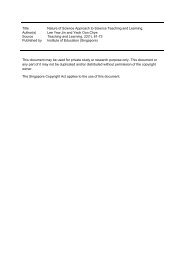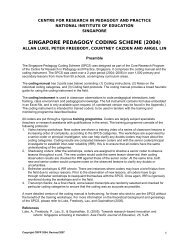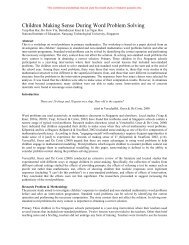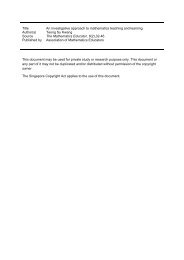Cooperative Learning - NIE Digital Repository - National Institute of ...
Cooperative Learning - NIE Digital Repository - National Institute of ...
Cooperative Learning - NIE Digital Repository - National Institute of ...
You also want an ePaper? Increase the reach of your titles
YUMPU automatically turns print PDFs into web optimized ePapers that Google loves.
142 Kirsten Schaetzeldiscussion and the exchange <strong>of</strong> ideas. At the beginning <strong>of</strong> a course, studentsare most <strong>of</strong>ten strangers to each other and some students may come fromcultures in which they do not make eye contact readily with people they donot know. According to Ritts and Stein (2002), '%ye contact, an importantchannel <strong>of</strong> interpersonal communication, helps regulate the flow <strong>of</strong> communication"(p. 1). This grid-filling exercise gives all students the opportunityto make eye contact and talk to each other, and it gives the teacher theopportunity to talk to all the students individually. Though this exerciseusually takes a full class to complete, the classes in which it is done have amuch better environment for discussion.In addition to this get-to-know-you exercise, Wilhelm (1999) suggests inher article "Collaborative Dos and Don'ts" that teachers "throw a classparty at the beginning <strong>of</strong> the term rather than at the end, as is customary"(p. 15). This is another way <strong>of</strong> helping students to get to know one anotherearlier rather than later and it enables students to feel at ease with eachother, thereby creating a good classroom climate for discussion.Another means <strong>of</strong> creating a good classroom climate is to overtly let studentsknow that the teacher values different opinions and ideas about topics.One way this can be done is by having students discuss slogans such as thefollowing: "Everyone is entitled to his/her opinion." 'We agree to disagree."and "If two people agreed on everything, one <strong>of</strong> them isn't necessary."Also, teachers can credit students for their contributions to discussions,as Wilkinson and Dubrow (1991) suggest: "Referring to 'John's theory' or'Mary's important observation' later in a conversation shows that we[teachers] remember and value their efforts" (p. 252).Another suggestion for creating a good, open, supportive climate fordiscussion is to set boundaries, or rules, for students just learning the skills<strong>of</strong> discussion. These boundaries should focus on what are appropriate andinappropriate ways to react to others' ideas, and how to listen to others'ideas. If students do not naturally use English, the use <strong>of</strong> English can alsobe a rule for class discussion. Rules work best if they come from the studentsthemselves. So, it is helpful to devote one lesson, early in the term, toa pair or small group discussion to focus on what class criteria are neededfor a good, polite, supportive discussion.


